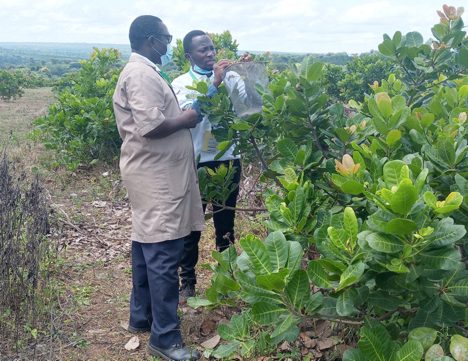The 2015 National Best Cashew Farmer, Nana Kwain Daniel, has appealed to chiefs and farmland owners within the middle and northern belts of the country to release lands to prospective cashew farmers, especially the youth to boost cashew production.
Unfriendly land tenure system such as high land lease value for cashew farmlands within the rich cashew growing enclaves remain a bane of increasing cashew production in the country. The prevailing situation has been a disincentive and hindrance for many who have the interest in cashew cultivation.
According to the 2015 National Best Farmer, there can only be a turnaround to boost local cashew production if custodians of arable farmlands are willing to give out to prospective cashew farmers at reasonable terms.
“I will implore chiefs, family heads and individual land owners to release lands to prospective cashew farmers. As major custodians of farmlands, Nananom should offer support to the youth in particular. This will be one of the surest ways they can contribute to reducing unemployment, and increase the country’s earnings from agriculture,” he said.
Nana Kwain who is also the Chief of Ateasu in the Tachiman North District of the Bono East Region made the appeal when trainees of the Competitive Cashew (GIZ/ComCashew) Master Training Programme made a field visit to his farm.
The field visit for the 41 participants, selected from Agricultural and Technical institutes across the country formed part of efforts to equip them with practical skills on application of Good Agricultural Practices (GAP) in cashew production.
After the training, the beneficiaries will be recognized as technical persons with requisite skills on cashew plantation establishment, management and rehabilitation, to deliver training in the various Agricultural Training Institutes.
Sharing his experiences with the Training Providers, the farmer said he started cashew farming in early 2000 and he can now boast of a total of over 200 acres of cashew farm, indicating that “at the beginning, I used to harvest just about a half bag (100kg) but now I’m able to harvest over 600 bags a season.”
He attributed his success to strict adherence to GAP such as pruning and recommended planting distance method as well as using quality planting material like grafted seedlings. He therefore advised farmers not to compromise extension advice on cashew cultivation.
Nana Kwain however lamented over perennial price fluctuation on the market, saying “the situation is a major disincentive for value chain actors of the commodity, particularly farmers.” He appealed to authorities to expedite action on the operationalisation of the Tree Crops Development Authority in anticipation of brining a finality to the worrying issue.
The 41 Training Providers also visited the Wenchi Agricultural Station where they were introduced to a numbers of technical skills in cashew production, including strategies to reduce high seedlings mortalities (irrigation technique using plastic bottle drip), pollination and how to develop new but superior cashew varieties.
In an interview with the B&FT, Dr. Paul Adu-Gyamfi, Research Scientist from the Cocoa Research Institute of Ghana dispelled the notion that polyclonal cashew seeds are low-yielding planting material, indicating that they [polyclonal cashew seeds] are equally good like grafted seedlings.
“Polyclonal seeds are good, they are comparable to the clones that are released from the grafting of certified centres like Wenchi and Bole research stations. Polyclonal seeds from credible sources like CRIG are approved and tested under robust conditions to ensure that they are able to withstand drought and offer high cashew quality as well as higher yields,” he said.










